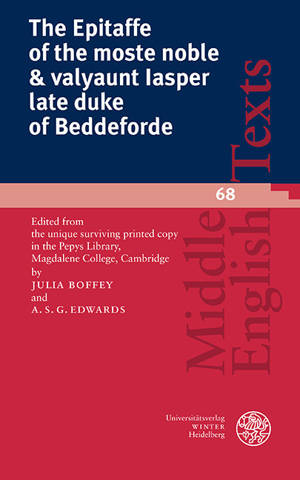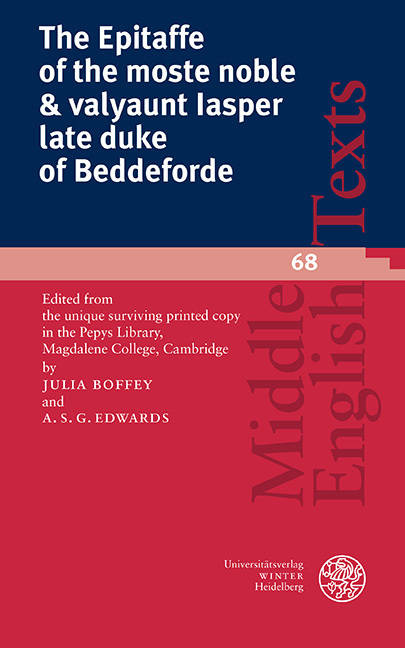
- Afhalen na 1 uur in een winkel met voorraad
- Gratis thuislevering in België vanaf € 30
- Ruim aanbod met 7 miljoen producten
- Afhalen na 1 uur in een winkel met voorraad
- Gratis thuislevering in België vanaf € 30
- Ruim aanbod met 7 miljoen producten
Zoeken
The Epitaffe of the Moste Noble & Valyaunt Iasper Late Duke of Beddeforde
Edited from the Unique Surviving Printed Copy in the Pepys Library, Magdalene College, Cambridge
€ 71,45
+ 142 punten
Omschrijving
'The Epitaffe of the moste noble & valyaunt Iasper late duke of Beddeforde' is a late fifteenth- century verse elegy for Jasper Tudor, uncle of Henry VII, who died in December 1495. It survives in a single, undated, printed copy in the Pepys Library in Magdalene College, Cambridge, very probably produced in London by Richard Pynson shortly after Jasper's death. The 'Epitaffe' appears to be the earliest piece of English verse by a living poet to be printed. It combines eulogy of Jasper with a lament for his death and with more generalized reflections on human loss and suffering. One unusual feature is the wide range of verse forms that it employs: in number and elaborateness these far exceed those appearing together in any other single Middle English poem. It is also notable for the variety of its rhetorical techniques, identified in the printed edition by marginal annotations without precedent in the presentation of English verse. This is the first critical edition of the 'Epitaffe'. The text is preceded by an introduction that includes discussion of the occasion and authorship of the poem and of the literary traditions and conventions on which it draws. It is followed by textual notes, commentary, glossary of proper names, and bibliography.
Specificaties
Betrokkenen
- Uitgeverij:
Inhoud
- Aantal bladzijden:
- 42
- Taal:
- Engels, Middelengels
- Reeks:
- Reeksnummer:
- nr. 68
Eigenschappen
- Productcode (EAN):
- 9783825396534
- Verschijningsdatum:
- 29/05/2025
- Uitvoering:
- Paperback
- Formaat:
- Trade paperback (VS)
- Afmetingen:
- 155 mm x 234 mm
- Gewicht:
- 502 g

Alleen bij Standaard Boekhandel
+ 142 punten op je klantenkaart van Standaard Boekhandel
Beoordelingen
We publiceren alleen reviews die voldoen aan de voorwaarden voor reviews. Bekijk onze voorwaarden voor reviews.







